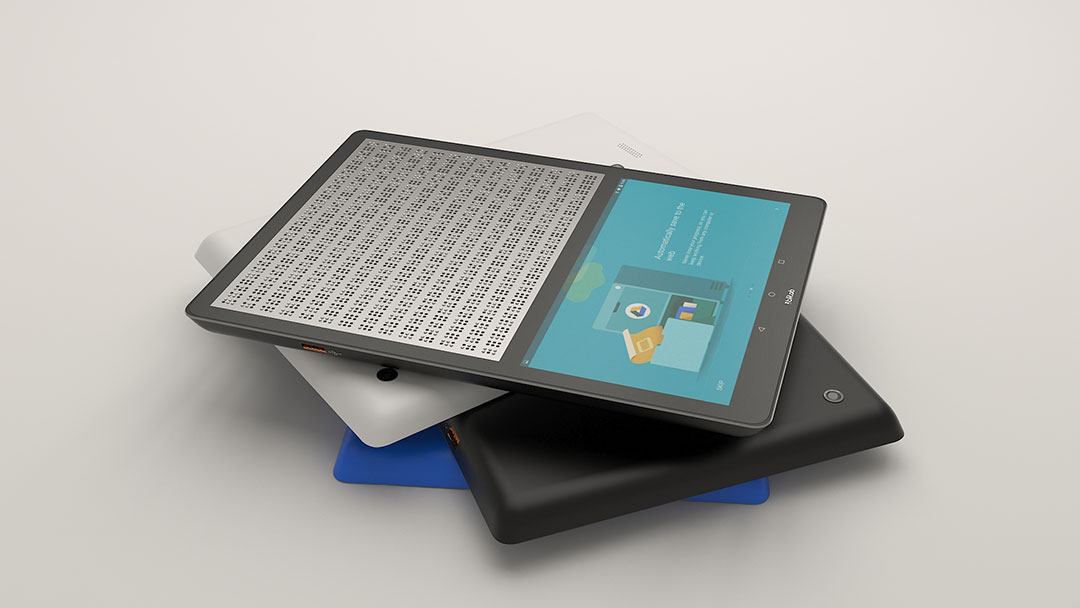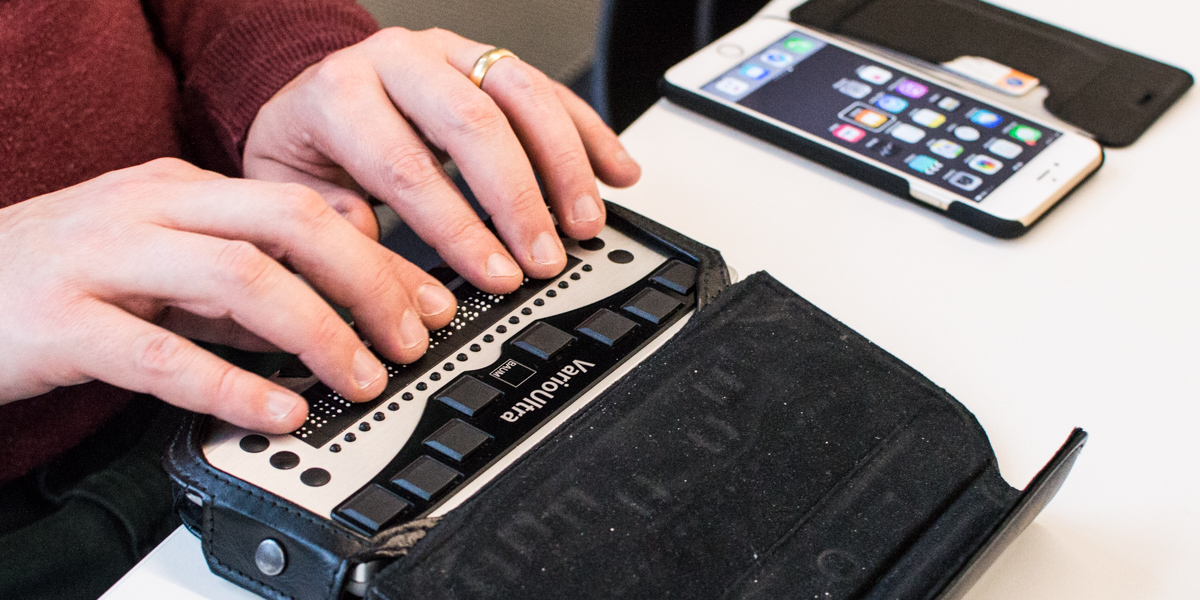Voice-Activated Assistive Devices: Simplifying Everyday Tasks
Voice-Activated Assistive Devices: Simplifying Everyday Tasks
Blog Article
Discover Cutting-edge Tools Designed for the Visually Impaired
The advancement of innovative tools for the aesthetically impaired stands for a significant advancement in ease of access and self-reliance. Technologies such as wise glasses with AI capabilities and mobile applications developed to give auditory summaries are improving daily experiences for customers.
Smart Glasses for Navigation

Smart glasses made for navigating are changing the method aesthetically damaged people interact with their setting. These innovative devices make use of a combination of camera innovation, artificial knowledge, and auditory comments to provide real-time details concerning environments. By employing obstacle detection systems, clever glasses can alert users to potential dangers, enabling safer movement in both strange and acquainted settings.
The combination of GPS innovation further boosts navigating abilities, permitting users to get auditory directions as they relocate. This hands-free method not only promotes independence but additionally equips aesthetically damaged people to navigate urban landscapes with boosted self-confidence. Additionally, many wise glasses are equipped with attributes that determine sites and street indicators, supplying contextual details that boosts the individual experience.
Furthermore, the development of these tools is continually progressing, with companies working to boost the precision of things recognition and increase the variety of navigational features. As wise glasses end up being more economical and obtainable, they hold the potential to substantially transform daily life for aesthetically damaged individuals. Inevitably, these ingenious devices stand for an essential step toward inclusivity, offering improved wheelchair and a higher feeling of freedom for individuals navigating the world around them.

Mobile Apps for Daily Living
How can mobile applications enhance the day-to-days live of aesthetically damaged individuals? Mobile apps are changing the way aesthetically damaged individuals browse their atmospheres, manage everyday tasks, and accessibility details. These applications give necessary assistance with numerous performances, fostering independence and improving top quality of life.
A number of ingenious mobile applications are created particularly for day-to-day living. For example, applications like Be My Eyes link aesthetically damaged customers with sighted volunteers through video phone calls, enabling them to obtain real-time aid with tasks such as reading tags or navigating unfamiliar spaces. Seeing AI, developed by Microsoft, makes use of synthetic intelligence to explain surroundings, checked out text, and identify objects, successfully transforming a smart device right into a powerful device for daily help.
Furthermore, navigating applications tailored for the visually impaired, such as Aira and BlindSquare, offer audio-based instructions and ecological information, enabling customers to traverse their environments securely and confidently. Beyond navigating and instant aid, mobile applications also sustain organization and job monitoring, with attributes that assist users establish reminders, produce order of business, and track appointments. In recap, mobile applications offer as crucial sources, equipping aesthetically damaged people to lead more independent and satisfying lives.
Wearable Technologies for Support
Empowerment through technology is progressively evident in the realm of wearable gadgets made to help visually impaired people. These ingenious tools integrate perfectly into life, improving navigating and supplying crucial responses to users. Wise glasses furnished with video look at here now cameras can check out and recognize faces message aloud, permitting users to interact even more confidently in social and professional setups.
An additional notable innovation is making use of haptic responses systems in wearable gadgets. These systems use vibrations or various other responsive signals to share information regarding the user's environment, such as barriers or changes in surface, boosting movement and security. Wearable innovations likewise include wristbands that connect to smartphones, informing customers to alerts via subtle resonances, thus improving connectivity without dependence on visual hints.
As these modern technologies remain to develop, they are not just improving independence for aesthetically impaired people yet additionally promoting a better feeling of addition in culture. By connecting the void in between challenges faced in daily living and the potential for freedom, wearable modern technologies work as crucial tools in the pursuit for equality and empowerment for those with visual problems.
Audio Description Devices
Audio summary tools play an essential duty in boosting availability for aesthetically impaired individuals, offering them with the ability to engage with visual media. Wearable technology for low vision. These devices provide narrated descriptions of vital visual aspects in films, television shows, and live efficiencies, ensuring that users can totally comprehend the context and emotions shared via visuals
Audio summary can be integrated into numerous systems, consisting of streaming solutions, movie theater testings, and live theater. Numerous preferred streaming solutions now include audio summary as an availability function, enabling viewers to pick it conveniently. Along with traditional media, specialized apps also exist, offering audio summaries for art events, museums, and various other social events.
The efficiency of audio description depends upon the ability of the storytellers, that must convey visual information succinctly without interfering with the initial audio. Advancements in this field are likewise paving the means for more individualized experiences, where users can adjust the degree of information and pacing according to their preferences.
Braille Innovations and Gadgets
Braille devices and advancements have dramatically changed the way aesthetically impaired people communicate with text and info. check over here Modern improvements have led to the advancement of functional tools that enhance proficiency and freedom among users.
In addition, mobile Braille notetakers integrate traditional Braille input with contemporary performances, facilitating note-taking, organizing, and file editing and enhancing on the move. Assistive technology for the blind. These compact tools typically include text-to-speech capabilities, connecting the gap in between Braille and acoustic details
Furthermore, ingenious Braille printers have actually emerged, permitting individuals to create Braille tags, documents, and academic products efficiently. This ease of access fosters greater engagement in educational and expert environments, inevitably promoting inclusivity.
Additionally, research study right into wise Braille technologies continues to expand. Tools that include expert system are being checked out to provide real-time navigating help and contextual details, enhancing the user experience in varied settings. Generally, these technologies show a commitment to encouraging visually damaged individuals through technology, guaranteeing they can conveniently accessibility and involve with the globe around them.

Final Thought
The innovation of innovative tools for the visually impaired considerably improves freedom and top quality of life. Smart glasses, mobile applications, wearable innovations, audio summary devices, and Braille technologies jointly empower individuals by supplying essential navigation support, environmental recognition, and enhanced reading experiences. These modern technologies not only foster better incorporation but also advertise freedom in daily tasks, ultimately adding to a much more easily accessible and fair culture for aesthetically impaired individuals. Proceeded development in this area holds assurance for further improvements.
As clever glasses come to be much more affordable and obtainable, they hold the prospective to substantially change daily life for index aesthetically damaged users. Mobile apps are revolutionizing the method aesthetically damaged users browse their environments, handle day-to-day jobs, and gain access to info. Applications like Be My Eyes attach aesthetically damaged customers with sighted volunteers via video clip phone calls, enabling them to get real-time support with jobs such as reading labels or navigating unfamiliar spaces.Furthermore, navigation applications customized for the aesthetically damaged, such as Aira and BlindSquare, offer audio-based directions and environmental info, making it possible for customers to traverse their surroundings safely and confidently.The improvement of ingenious devices for the aesthetically impaired dramatically boosts freedom and top quality of life.
Report this page